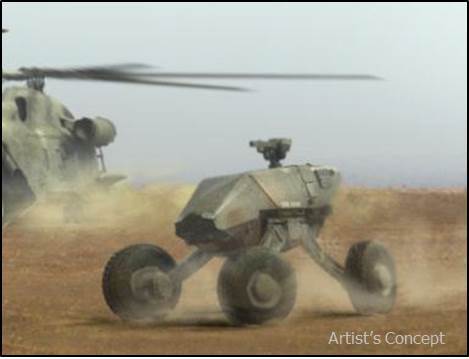For the past 100 years of mechanized warfare, protection for ground-based armored fighting vehicles and their occupants has boiled down almost exclusively to a simple equation: More armor equals more protection. Weapons’ ability to penetrate armor, however, has advanced faster than armor’s ability to withstand penetration. As a result, achieving even incremental improvements in crew survivability has required significant increases in vehicle mass and cost.
The trend of increasingly heavy, less mobile and more expensive combat platforms has limited Soldiers’ and Marines’ ability to rapidly deploy and maneuver in theater and accomplish their missions in varied and evolving threat environments. Moreover, larger vehicles are limited to roads, require more logistical support and are more expensive to design, develop, field and replace. The U.S. military is now at a point where—considering tactical mobility, strategic mobility, survivability and cost—innovative and disruptive solutions are necessary to ensure the operational viability of the next generation of armored fighting vehicles.
DARPA has created the Ground X-Vehicle Technology (GXV-T) program to help overcome these challenges and disrupt the current trends in mechanized warfare. GXV-T seeks to investigate revolutionary ground-vehicle technologies that would simultaneously improve the mobility and survivability of vehicles through means other than adding more armor, including avoiding detection, engagement and hits by adversaries. This improved mobility and warfighting capability would enable future U.S. ground forces to more efficiently and cost-effectively tackle varied and unpredictable combat situations.
“GXV-T’s goal is not just to improve or replace one particular vehicle—it’s about breaking the ‘more armor’ paradigm and revolutionizing protection for all armored fighting vehicles,” said Kevin Massey, DARPA program manager. “Inspired by how X-plane programs have improved aircraft capabilities over the past 60 years, we plan to pursue groundbreaking fundamental research and development to help make future armored fighting vehicles significantly more mobile, effective, safe and affordable.”
GXV-T’s technical goals include the following improvements relative to today’s armored fighting vehicles:
- Reduce vehicle size and weight by 50 percent
- Reduce onboard crew needed to operate vehicle by 50 percent
- Increase vehicle speed by 100 percent
- Access 95 percent of terrain
- Reduce signatures that enable adversaries to detect and engage vehicles
The GXV-T program provides the following four technical areas as examples where advanced technologies could be developed that would meet the program’s objectives:
Radically Enhanced Mobility:
Ability to traverse diverse off-road terrain, including slopes and various elevations; advanced suspensions and novel track/wheel configurations; extreme speed; rapid omnidirectional movement changes in three dimensions
Survivability through Agility:
Autonomously avoid incoming threats without harming occupants through technologies such as agile motion (dodging) and active repositioning of armor
Crew Augmentation:
Improved physical and electronically assisted situational awareness for crew and passengers; semi-autonomous driver assistance and automation of key crew functions similar to capabilities found in modern commercial airplane cockpits
Signature Management:
Reduction of detectable signatures, including visible, infrared (IR), acoustic and electromagnetic (EM)
Technology development beyond these four examples is desired so long as it supports the program’s goals. DARPA is particularly interested in engaging non-traditional contributors to help develop leap-ahead technologies in the focus areas above, as well as other technologies that could potentially improve both the survivability and mobility of future armored fighting vehicles.
DARPA aims to develop GXV-T technologies over 24 months after initial contract awards, which are currently planned on or before April 2015. The GXV-T program plans to pursue research, development, design and testing and evaluation of major subsystem capabilities in multiple technology areas with the goal of integrating these capabilities into future ground X-vehicle demonstrators.











